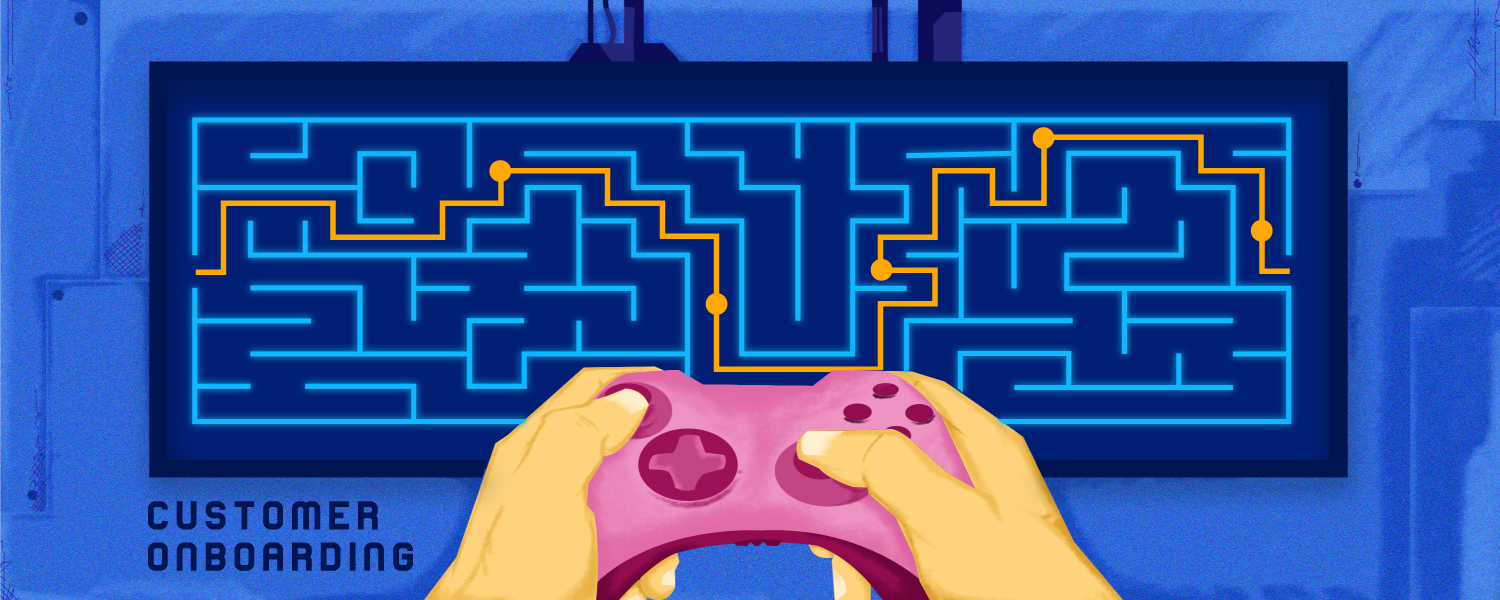It shouldn’t come as a big surprise that a positive customer onboarding experience ensures that your customers feel like they made the right choice by picking your product or service from the first moment they start using it. It also, eventually, helps you retain them.
But what does customer onboarding mean, and what are the must-have strategies to make the process hassle-free for your prospects and customers?
Read on.
What is customer onboarding?
Customer onboarding is the process that gets new users and customers familiarized and comfortable with your product. A good customer onboarding program involves helpful guidance, step-by-step tutorials, support, and celebrating your customer’s success milestones upon using your product or service.
Why is customer onboarding so important?
Not paying enough attention to good customer onboarding practices can turn out to be extremely risky as 40-60% of users who register for a free trial end up barely using the product and may never convert into paying customers if proper onboarding strategies are not practiced.

How you onboard your new customers set the tone for your ongoing relationship with them and is worth paying attention to. It reduces churn, increases your customer lifetime value (LTV), and turns new users into fans.
Here are a few facts on the importance of good customer onboarding.
- Your existing customers contribute to the majority of your business revenue.
- Happy customers will become your brand advocates.
- Customer retention contributes to lower acquisition costs.
In a nutshell, customer onboarding is imperative to retention and business growth.
Who is responsible for customer onboarding?
Customer onboarding is a sum of parts. It doesn’t rest on the shoulders of any individual department or team member.
This includes:
- Customer success: The customer service agents tackle ongoing customer issues and provide insights into frequent problems and questions that can be addressed for future customers in the onboarding process.
- Technical support: The technical support team provides advanced documentation, training, and knowledge base information to make the user onboarding process much smoother thus improving your customer relationships.
- Sales and account management: The sales and account management team aids users through customer onboarding, backing them at every turn in the early stages through completion.
- Analysts: The analytics team is responsible for reviewing red flag metrics and at-risk customers, turning up key problem points in onboarding to make process improvements
How to implement a customer onboarding process that will benefit your business?
As you build out your onboarding strategy, keep your objective specific to your product and, more importantly, to your customer base, and ensure it covers these two key retention goals:
- Get prospects to use your product more than once within the first week of product sign-up
- Design your product to become indispensable to your customers’ lives.
Here’s how to create an ideal customer onboarding strategy –
1. Understand customer expectations
One size does not fit all. Before developing a workable policy and procedure for product familiarization, you must first understand your user. Create user personas to understand the problems customers are trying to solve, the roadblocks they might have in setting up their accounts, and even their more significant motivations. This will help you create a meaningful customer onboarding strategy for each user.
To create these customer personas you can roll out a brief survey to users on social media or by email. The data you receive from the surveys will help build a customized onboarding process to connect with the right audience.
2. Perform frequent competitor analysis
One of the best ways to build a better version of your product is by observing what’s working for your competitors. Explore the content and capabilities of your competitor(s) before designing your customer onboarding process. Take a look at their strategies and functionalities and understand their strengths and weaknesses, and subsequently craft your customer onboarding strategies to make your customer understand the best usage of your product.
When you sign up for free trials of industry leaders, check their in-app experiences, look into the navigational flow of the features, and reach out to their support team to evaluate how they are onboarding their customers. Apart from this, try to understand their challenges and how effectively they dealt with them. Read their blogs and learn how they use content to encourage product adoption further.
3. Craft personalized journeys

An ideal strategy to build a personalized relationship with the customer is by staying in touch with them to understand their onboarding experience with the product. Guide them on how to use your product, listen to their product-related concerns and queries, and answer them all. If you are unaware of any technical aspects, reach out to the technical team for better transparency.
Engage your users with a mandated list of onboarding emails such as:
- Welcome mail upon new user activation.
- Thank you email after sign-up
- Product promotional emails.
Include a great product demo in your welcome email, as it could stand out as one of the best sales tools to promote your product. Ensure your product demo is short and informative, covering the major selling points. When they see your product in action, they can fully estimate its value and potential and decide on further product purchase plans accordingly.
4. Build a quick yet informational product tour
Be a great guide to your newly signed-in customer. While focusing on your product’s features and tangible benefits, highlight the problem your product aims to solve. Igniting interest is one thing; sustaining it is a different ball game.
Unfortunately, most first-time users of most products drop away after the sign-up process. While the reasons might vary, a comprehensive customer onboarding framework should create engaging content to encourage prospects to return to the product and understand the value they can attain to their business or service using your product. Create your product tutorials in a way your prospects and customers don’t need external support from your onboarding or customer success teams to understand your product better.
5. Offer stellar customer support 24/7
One of the crucial building blocks to sustain the strength of your product in the market is your customer support. Ensure your teams are available round the clock with email support, call services, and live chat to provide seamless customer interactions. Train them on every product feature and release so they can tackle all kinds of customer technical and functional queries.
6. Perform regular A/B Testing

Be it your website, email format, app, landing pages, sign-up procedure, and in-app user experience, use A/B testing to understand what content will pave the way for a successful customer onboarding process. A/B testing involves comparing two different versions of your product in terms of button placement, content used, label text, etc., to find the one that best suits your audience. Effective implementation of the winning version will let you experience higher visitor-customer conversion.
The five stages of the A/B testing process include: gathering data, figuring out goals, generating a hypothesis, creating variations, running experiments, and eventually analyzing results. Product designers and developers usually adopt this process to evaluate the user experience and thus create excellent customer onboarding strategies.
Step-wise checklist for a happy customer onboarding
A survey from Harvard Business Review says an increased focus on customer onboarding has an important impact on the product’s lifetime. This is why you need to ensure the best product experience for your users.
Here’s a 9-step onboarding checklist for a happy customer onboarding:
- Have a simple sign-up form
- Personalize the notifications
- Introduce automation wherever it’s necessary.
- Add a verification check for new customers.
- Design templates for welcome emails and transactional emails
- Schedule product tours and product walkthroughs
- Set up a welcome call and follow-up calls if necessary
- Provide product knowledge base and tutorials.
- Extend excellent customer support.
A quick tip: To transform your first-time visitor into a potential long-term customer, focus on the features and capabilities in which previous customers found the most value.

Customer onboarding helps your business grow
Any outstanding customer onboarding process focuses on the customer. But the journey doesn’t end there.
Customer onboarding practices are constantly evolving. It’s a strategy that needs to be adopted and adapted consistently. As your business scales, so will your services, and your customer onboarding workflow should reflect that. So, it’s essential to build a hassle-free experience at every touchpoint. Take the time to align with your customer service, sales, and marketing teams, and always keep your customers at the center of your efforts.
Looking For Startup Consultants ?
Call Pursho @ 0731-6725516
Telegram Group One Must Follow :
For Startups: https://t.me/daily_business_reads




